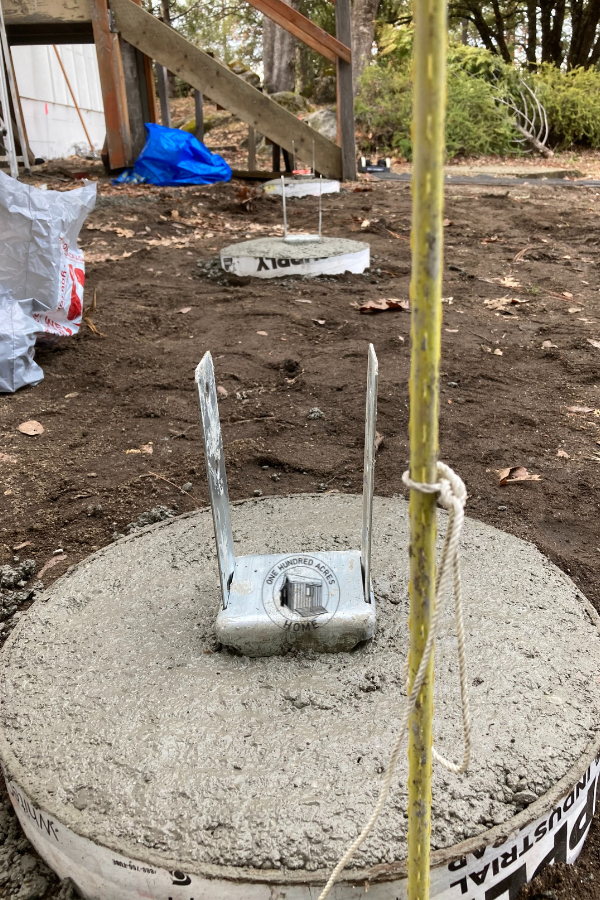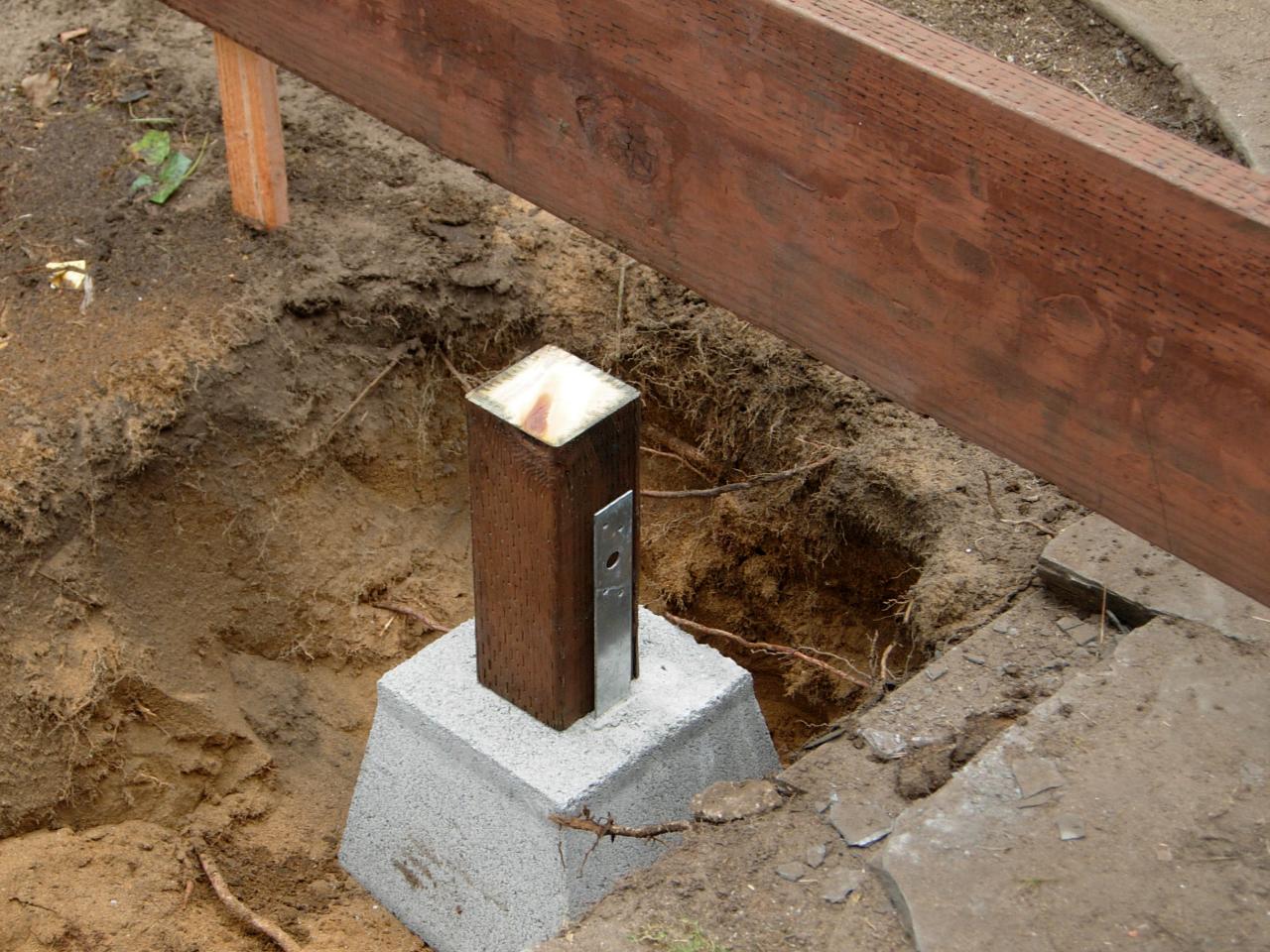Deck Footings Introduced: Comprehending the Key Elements of a Trustworthy Deck Structure
Selecting the Right Deck Footings for Stability and Longevity
The longevity and security of your deck depend greatly on the type of footings you select, as they offer the essential assistance and stability to hold up against the examination of time. In this conversation, we will explore the numerous kinds of deck grounds, think about the vital variables to evaluate when making a decision, and dig right into the pros and cons of different alternatives.
Sorts Of Deck Footings
There are several types of deck grounds that can be utilized, each offering unique advantages and factors to consider. One typical kind of footing is the concrete pier ground. These footings include a cylindrical hole full of concrete, which offers a strong foundation for the deck messages. Concrete pier footings are relatively simple to mount and supply superb stability, making them a prominent selection for several deck jobs.
These grounds are installed by screwing them into the ground, which develops a protected foundation for the deck. They also enable for easy modification and progressing of the deck if required.
Additionally, some contractors go with precast concrete grounds. These footings are constructed from resilient concrete and come in numerous sizes and shapes to fit various deck designs. Precast concrete footings are hassle-free to install and provide a steady base for the deck framework.
Lastly, another option is the post-in-anchor footing system. This kind of ground includes driving a metal support into the ground and affixing it to the deck post. It supplies adaptability in regards to placing the deck messages and appropriates for decks with lightweight structures.
When choosing the best sort of deck ground, it is crucial to take into consideration variables such as soil conditions, deck lots, and local building ordinance (Deck Footings). Consulting with a professional contractor or structural engineer can help make certain the ideal footing is chosen for a secure and secure deck
Elements to Take Into Consideration When Picking Footings
When selecting the ideal footings for a deck, it is critical to carefully think about various variables such as soil problems, deck load, and adherence to local building codes. These aspects play a significant role in making certain the security and sturdiness of the deck framework.
The type of soil on which the deck will be built figures out the kind of footings required. On the other hand, decks constructed on clay or large dirts might call for footings that can suit the dirt's tendency to increase and agreement.
One more important variable is the deck tons. The weight of the deck, consisting of the products made use of and any type of prospective live lots such as furnishings or celebrations, should be taken into account when choosing grounds. The grounds must be designed to birth the weight of the deck and disperse it equally to avoid any kind of architectural issues or failings.
Finally, adherence to local structure codes is critical. Building regulations differ from region to region, and it is necessary to comply with the certain needs set by the regional authorities. Deck Footings. These codes make certain that the deck is constructed securely and meets the required requirements for structural integrity and load-bearing capability
Concrete Grounds: Disadvantages and pros

Concrete footings use a number of benefits and see this disadvantages when utilized as the foundation for a deck. On the positive side, concrete footings give excellent stability and toughness.
One more advantage of concrete footings is their versatility. They can be poured right into various forms and dimensions to fit various deck designs and setups. Concrete grounds can be personalized to fit the particular demands and needs of the deck framework.
However, there are also some downsides to making use of concrete footings. One major downside is the price and labor entailed in their installment. Concrete grounds need excavation and typically require the support of heavy machinery. This can increase the total price of the deck job and may require specialist help.

Helical Piers Vs. Sonotubes: Which Is Much better?
In thinking about the foundation options for a deck, the comparison between helical piers and sonotubes is important in identifying the exceptional selection. Helical piers, also known as screw piles, are steel shafts with helical plates connected to them. They are twisted into the ground using hydraulic equipment, providing a secure and sturdy structure for the deck. On the various other hand, sonotubes are cylindrical forms constructed from cardboard or fiber product that are filled up with concrete. They are put in a hole explored the ground and supply support for the deck.
When it involves security and sturdiness, helical piers have the top hand. The helical plates on the piers create a strong grasp with the dirt, shifting or stopping any kind of movement of the deck. This is particularly helpful in locations with unpredictable or shifting dirt conditions. Sonotubes, on the other hand, rely solely on the concrete filling for security, which may not provide the same level of strength and resistance.
In regards to installment, helical piers are relatively simpler and faster to set up contrasted to sonotubes. The hydraulic site here machinery used to turn the piers into the ground guarantees a fast and reliable process. Sonotubes, on the other hand, call for digging openings and pouring concrete, which can be labor-intensive and taxing.
Additionally, helical piers are a more functional alternative. If needed, they can be made use of in various soil problems and can be changed or reinforced. Sonotubes, on the various other hand, might call for added support, such as rebar, in specific soil conditions or locations with high tons demands.
Selecting the Right Footings for Your Deck's Measurements
For optimal structural honesty, it is vital to thoroughly pick the proper footings that straighten with the dimensions of your deck. The measurements of your deck, including its size, size, and elevation, play a substantial role in identifying the type and size of grounds called for.
When selecting footings for your deck, it is necessary to take into consideration the load-bearing capacity of the soil. The weight of the deck, incorporated with the weight of any furnishings or people on it, puts in a substantial force on the footings (Deck Footings). It is crucial to select footings that can appropriately support this weight without moving or sinking over time.
Larger decks with higher measurements call for bigger grounds to supply adequate stability and assistance. The shape of the footings, whether they are square or rounded, depends on the style and layout of the deck.
Verdict
In final thought, choosing the best deck grounds is essential for ensuring security and resilience. Variables such as the type of footings, the deck's dimensions, and the pros and cons of various alternatives must be taken into consideration.
These footings are composed of a cylindrical opening loaded with concrete, which supplies a solid structure for the deck posts. Concrete pier footings are fairly simple to install and supply exceptional stability, making them a preferred selection for lots of deck jobs.
Precast concrete grounds are convenient to mount and supply a secure base for the deck structure.
It offers flexibility in terms of placing the deck articles and is appropriate for decks with lightweight frameworks.
Concrete footings supply a number of benefits and disadvantages when utilized as the foundation for a deck.